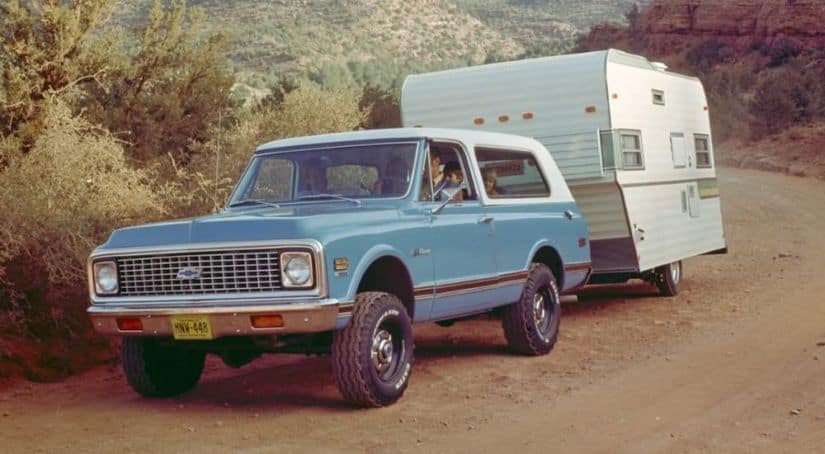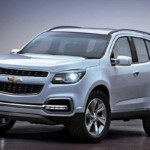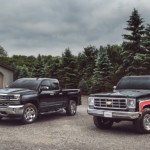If you are interested in learning more about Chevy SUVs, then you’ve probably come across the original Chevy Blazer at some point in your journey. Officially called the Chevrolet K5 Blazer, this rugged model was produced by General Motors from 1969 until 1991. It’s the smallest full-size SUV model in the family, and it has made a lasting impression on fans of the brand.
The First Generation
Back in 1969, Chevy unveiled this two-door full-size SUV vehicle to compete against the Ford Bronco. Built on a short, truck-style wheelbase, this rugged transport was initially only available with 4WD, but 2WD was added to the lineup the following year. After only one year on dealership lots, this model was outselling every other vehicle in its class, including the Ford Bronco.
From 1969 until 1972, this model was offered with four engine choices, including a 4.1-liter inline-6 that generated 155 hp, a 4.8-liter inline-6, a 5.0-liter V8 that made 200 hp, and a 5.7-liter V8 that put out 255 hp. There were also three transmission choices, including a 3-speed manual, 3-speed automatic, and 4-speed automatic. Two transfer case options were available, including the Dana 20 and the NP-205. With an approach angle of 35-degrees and 8-inches of ground clearance, the Blazer quickly became known for its versatility and off-roading capabilities.
Models with the 2WD system featured an independent front suspension with coil spring and rear trailing arms. This helped make the drive a bit smoother. On the other hand, the 4WD version was equipped with leaf springs at the front and rear along with a solid front axle. This improved the vehicle’s ability to climb over rocks.
Measuring 177.5-inches in overall length, this beast had more storage space than its competitors. It was also highly customizable with the ability to be configured to hold one, two, or even five passengers. The fiberglass top could be removed to turn the vehicle into a convertible. This was great for people who liked to venture into the wild outdoors. Optional features included power steering/brakes, air conditioning, heavy-duty springs/shocks, and an auxiliary battery.
The Second Generation
With a much longer lifespan, the second-generation of Chevy Blazer lasted from 1973 to 1991. Fully redesigned, this version offered a tilt steering wheel that could be adjusted to suit the driver’s height. The wheelbase was stretched by 2.5-inches, and the overall length was extended by 7-inches. V8 models came standard with an automatic transmission and 4WD for optimized handling. Keeping the convertible top until 1975, a half-cab design was released in 1976. This style kept the driver and front-seat passenger cover while exposing the back. It gave off a more truck-like appearance and could be fitted with recreational accessories like a camper.
The Blazer Chalet took things to a whole new level of excitement. Sleeping two people, it was the perfect camping companion for avid travelers. It also featured an icebox, a dinette table, a sink, and a dual-burner propane stove for cooking on the base model. Mid-level trims came with extra features like a small refrigerator and a cozy propane heater. The premium trim level added overhead fold-out bunks that could sleep two additional people. Camping with friends and family had never been made easier!
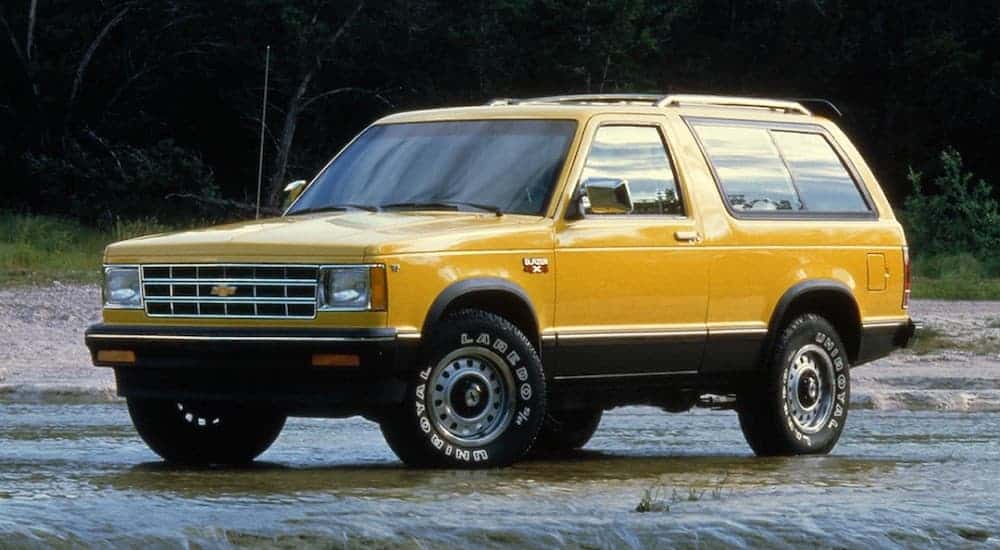
By 1981, the Blazer lineup added a diesel 6.2-liter V-8 engine to the list of options, and the lineup was expanded even further in 1983 with the addition of the smaller S-10 Blazer. Inspired by the S-1 pickup truck, this new model was shortened by 14.5-inches. It was all narrowed by 14.9 inches, making it a more compact version of the K5. Engine options on this new little brother model included a 2.0-liter inline-4 that made 83 hp, a 2.8-liter V-6 that generated 100 hp, and later a 4.3-liter V-6 engine. The development of this compact truck-based SUV was due to the 1979 energy crisis, which left automakers scrambling to come up with more fuel-efficient models. Chevy wasn’t too keen on giving up on the Blazer entirely, so offering a compact version was their way of compromising. The S-10 Blazer did not have a removable top, and it only featured two doors until a 4-door version was released in 1990. This later version was 6.5-inch linger, but it maintained the petite stature of the previous S-10 models.
Other updates done to the original Chevy Blazer in the 1980s included new paint options. The 1988 models came in Forest Green Metallic, Bright Blue Metallic, Dark Mesa Brown Metallic, and Light Mesa Brown Metallic. In addition, a few other upgrades were also added, including a fixed mast antenna and a tire odometer. Air leak issues were also solved with a better door handle seal, and windshield wiper control was also enhanced.
In 1989, the grille styles on all models were refreshed, and bezel headlamps were added. By 1990, a rear-wheel anti-lock braking system was equipped on all models as well, and power-adjustable mirrors became an option.
The Third Generation
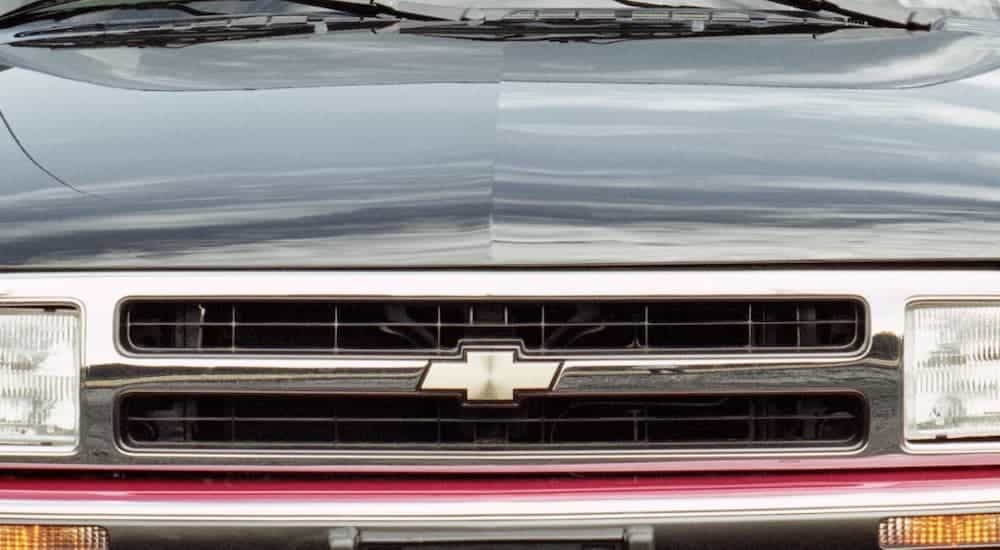
From 1992 to 1994, things changed rapidly for the Blazer. No longer a topless model, it was built with a full-strength steel roof and was powered by only one engine. All the options for powertrains were gone, and the vehicle ran on a 5.7-liter V8 motor that generated 210 hp. It could be equipped with a 5-speed manual or a 4-speed automatic transmission, and drivers could also choose between 2WD or 4WD. This version of the Blazer could carry six people and tow up to 7,000 pounds with no problem.
In 1994, a turbocharged diesel 6.5-liter V8 engine was added to the lineup. This powertrain pushed out 180 hp and 360 lb-ft of torque. However, this was the final production year for the iconic Blazer. By 1995, it morphed into the Yukon.
The Return of the Blazer
In 2019, Chevy decided to bring back the. Powered by either a 2.5-liter four-cylinder that makes 193 hp or a 3.6-liter V6 that generates 308 hp, this model is much more refined than older versions. Featuring a large grille, slender headlights, and a high beltline, the newer Blazer adds stylish design elements to the exterior for a more stately look. The interior design was inspired by the Chevy Camaro and features a sleek center stack and advanced technology.
If you’re looking for an original Blazer, you can still find them floating around used car lots. Just be sure to check for rust damage and get a vehicle history report. You should also take a peek at the odometer and take the vehicle out for a test drive to listen for any strange engine sounds. There is still an active market of folks who are seeking out this iconic American ride. Due to its rugged appearance and high level of versatility, it has managed to remain a fan favorite over the last few decades.
